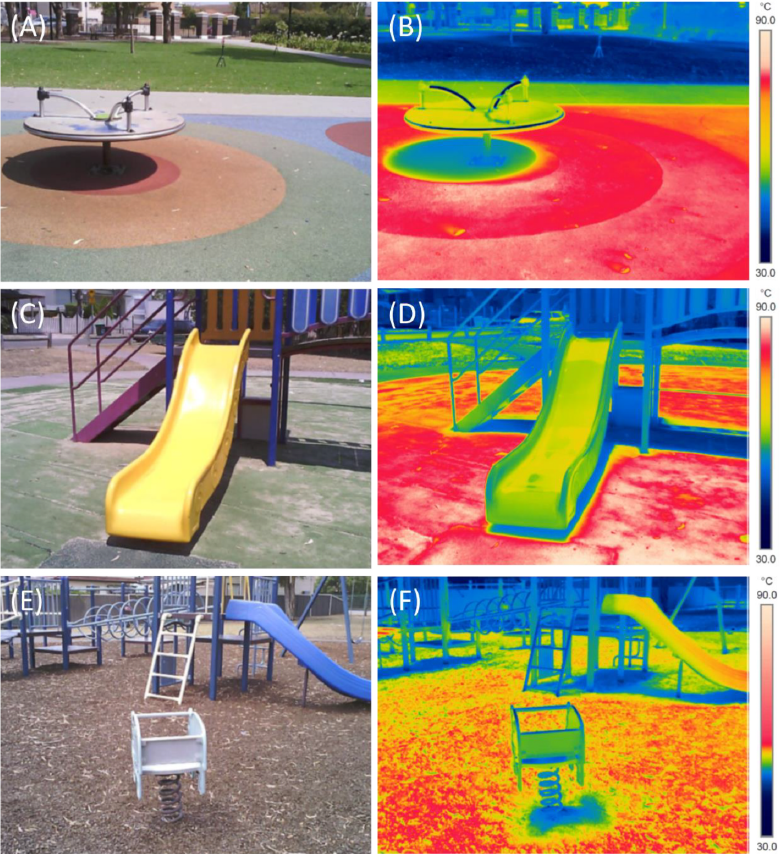Blog
Global warming and the safety surfacing of Outdoor Playground, Fitness areas and Waterparks

Global warming and the safety surfacing of Outdoor Playground, Fitness areas and Waterparks
World leaders were last year in Sharm el-Sheikh, Egypt for the 27th United Nations Climate Conference, or COP27. The meeting came after one of the hottest and driest summers in Europe, record flooding, droughts, big fires, and hurricanes elsewhere in the world.
An article by Sònia Sanchez in the Ara newspaper indicated a year ago that Europe is warming twice as fast as the planet's average.
Temperatures on the European continent have risen at a rate that doubles the global average in the last 30 years: half a degree more each decade since 1991. More than any other continent in the world according to the conclusions of the report published also last week and presented by the Secretary General of the WMO, Petteri Taalas.
During past summer in Barcelona, we have had the feeling of experiencing extreme temperatures and it was for many days in a row. Never before, or at least since there are records, have the temperature averages and the number of consecutive days with an unbearable heat wave been given and everything suggests that this will be the summer with the lowest average temperatures of our lives.
Heat has become a growing challenge for several cities worldwide due to the dynamic interaction between climate change and urban features. Buildings and impervious materials have great capacity to absorb solar radiation, retain heat and then release it into the city environment, causing the urban heat island effect. The impacts of climate change are particularly strong due to a significant increase in frequency and intensity of heatwaves. Under such hot conditions, citizens are exposed to heat-related illnesses, especially children that are more subject to increase in body temperature.
I am aware about the research projects at some universities as the Western Sydney University (WSU) by Dr Sebastian Pfautsch and Universitat Politecnica de Catalunya (UPC) by Agnese Salvati and several City Councils and public bodies that have begun to carry out or have published studies on how to deal with this global warming, in outdoor public spaces such as playgrounds, aquatic parks and fitness areas. These research projects analyze the thermal conditions of public spaces with playgrounds or outdoor fitness areas to produce practical guidelines for overheating risk mitigation of spaces designed for children under typical and extreme hot conditions and they found that average surface temperatures of sun exposed playground equipment and flooring surfaces are frequently above skin contact burn thresholds.
The flooring and play equipment in these spaces will need creative solutions for key features affecting thermal conditions such as sky view factor, ground materials albedo, emissivity and permeability, vegetation, and shading systems.
In regions of Australia or several Middle East and South European Countries where solar radiation loads are very high to extreme during the hotter months of the year, temperatures may be frequently close to 50 degrees Celsius and as a result it is easy to find temperatures of play equipment hitting more than 80 degrees Celsius, while unshaded rubber surfacing often reaches nearly 90 degrees Celsius on summer days.
Natural surfaces are always cooler compared to impervious ones, as they retain more water that allow to dissipate solar energy radiation in the evaporation process. However, some synthetic solutions as the Polysoft polyolefin beads (TPO) bound in aliphatic binder have shown temperatures a lot cooler (around 15º Celsius difference) than other EPDM, TPV or other rubber or synthetic grass based systems, providing its soft-fall surface which absorbs less heat than many other playground surfaces due to a beaded structure designed to deflect rather than absorb heat, keeping it degrees cooler than other surfaces exposed to the same conditions.
This makes Polysoft system specially indicated for near water applications where users walk usually barefoot as swimming pools, spas, waterparks, and splash parks.
New materials and systems, light-coloured options, and the incorporation of shade elements will avoid these areas to be dangerous, unhealthy, or become desert spaces for many months of the year.
References:
2. Outdoor playgrounds and climate change: Importance of surface materials and shade to extend play time and prevent burn injuries
Sebastian Pfautsch, Agnieszka Wujeska-Klause , Judi Walters
Urban Planning and Management, School of Social Sciences, Western Sydney University, Locked Bag 1797, Penrith, NSW, 2751, Australia
3. Agnese Salvati - Tecnologia de l’Arquitectura,
View More Blog
-
What Are The Top 7 Benefits Of Using Soft-Fall Playground Flooring
-
Top 5 Types Of Slip-Resistant Flooring That You Need Today
-
Why Is Uv-Resistant Soft Flooring A Must-Have For The Outdoors
-
How To Cool Urban Heat Islands: Surface Choices Make A Difference
-
The flooring of a Savannah Splash Zoo
-
Accessibility of Polysoft absorbent flooring in playgrounds, water parks, exercise areas and leisure spaces
-
The lifespan of safety flooring systems and how Polysoft test it
-
Measuring slip resistance of a flooring system on dry and wet. The Polysoft choice and results
-
The colours on the flooring and fashion.
